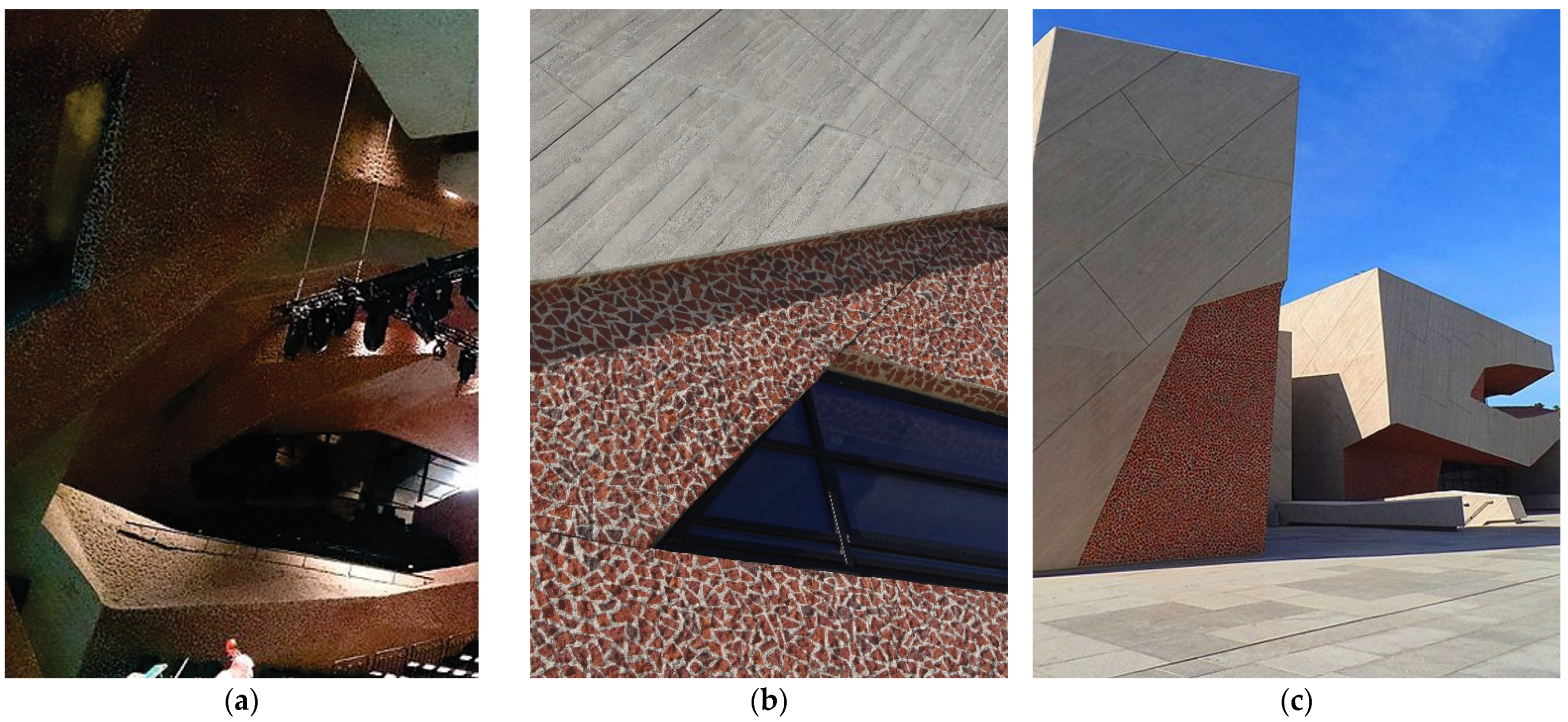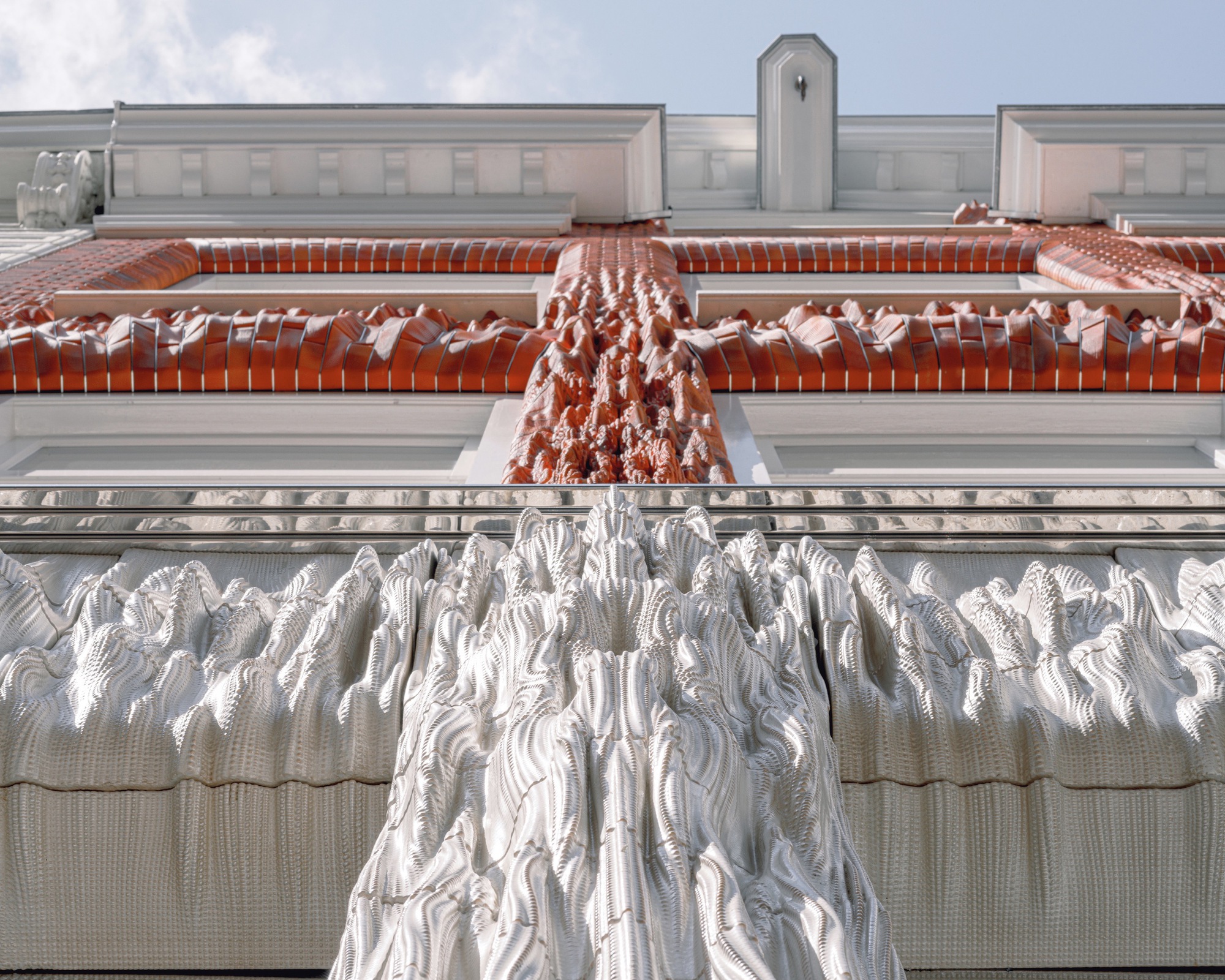In the world of architecture, facades play a crucial role in defining the character and identity of a building. They serve as a visual representation of the design concept and often act as the first point of contact for visitors. Traditionally, facades were limited to simple materials such as brick, stone, or concrete. However, advancements in technology have opened up new possibilities for architects to create more textural and expressive facades that push the boundaries of design. This article explores the innovative techniques and technologies that are revolutionizing the way facades are sculpted, resulting in stunning architectural masterpieces.

The Evolution of Facades
A Brief History
The concept of facades dates back to ancient times when humans began constructing shelters and homes. Initially, facades were constructed using basic materials such as mud, wood, and thatch. As civilizations evolved, so did the techniques and materials used for facades. The ancient Egyptians, for example, utilized stone and intricate carvings to create grand facades for their temples and tombs. Similarly, the Greeks and Romans employed the use of marble and intricate detailing to showcase their architectural prowess.
Traditional Facade Materials and Techniques
Throughout history, architects have relied on traditional materials and techniques to create facades. These materials include brick, stone, concrete, and glass. The techniques involved in constructing facades often required manual labor and craftsmanship, resulting in limited design possibilities. However, these materials and techniques continue to be used today, albeit with modern advancements that enhance their performance and aesthetics.
Innovative Techniques and Technologies
Digital Design and Fabrication
One of the most significant advancements in facade design is the integration of digital design and fabrication techniques. Architects now have access to powerful computational tools that enable them to create complex geometries and intricate patterns. With the help of parametric design software, architects can generate digital models that can be translated into physical structures using advanced fabrication technologies such as 3D printing and CNC milling. This combination of digital design and fabrication allows for precise control over the form and texture of facades, resulting in highly expressive and visually stunning designs.
Parametric Design
Parametric design is a design approach that allows architects to create complex, dynamic, and adaptive structures. By defining a set of parameters and relationships, architects can generate a multitude of design iterations that respond to various environmental factors. Parametric design is particularly useful in facade design, as it allows architects to optimize factors such as solar shading, daylighting, and ventilation. Moreover, parametric design enables the creation of unique and innovative facades that are tailored to specific project requirements.
3D Printing
3D printing technology has revolutionized the field of architecture by allowing architects to fabricate intricate and complex components with ease. When it comes to facades, 3D printing opens up a world of possibilities in terms of form, texture, and detail. Architects can now design and fabricate custom facade elements that were previously difficult or impossible to achieve using traditional construction methods. The ability to 3D print facades also offers benefits in terms of cost and time efficiency, as it eliminates the need for complex formwork and extensive manual labor.
Smart Materials
Smart materials, also known as responsive materials, are a class of materials that can change their properties in response to external stimuli. These materials have the potential to revolutionize facade design by enabling dynamic and interactive facades. For example, thermochromic glass can change its transparency based on temperature, allowing for dynamic control over solar heat gain and daylighting. Similarly, electrochromic materials can alter their opacity in response to an electrical current, providing privacy and glare control. The incorporation of smart materials in facades adds a layer of functionality and interactivity, enhancing the overall user experience.
Geometric Complexity
Advancements in digital design and fabrication technologies have made it possible to create facades with intricate geometries and complex patterns. Architects are now able to explore organic, biomorphic forms that were previously challenging to achieve using traditional construction methods. This geometric complexity not only adds visual interest to facades but also enhances their structural performance. By leveraging computational tools, architects can optimize the shape and form of facades to maximize structural efficiency and minimize material usage.

Case Studies: Iconic Facades
The Guggenheim Museum Bilbao
The Guggenheim Museum Bilbao, designed by architect Frank Gehry, is renowned for its iconic titanium-clad facade. The facade consists of 33,000 individual titanium panels, each uniquely shaped and positioned to create a dynamic and sculptural effect. The use of titanium allowed Gehry to achieve the desired curvilinear form while maintaining structural integrity. The result is a facade that reflects light in different ways throughout the day, creating a mesmerizing play of shadows and reflections.
The CCTV Headquarters
The CCTV Headquarters in Beijing, China, designed by architects Rem Koolhaas and Ole Scheeren, features a striking facade that challenges the traditional notions of building design. The facade is composed of a continuous loop of horizontal and vertical sections, forming a distorted, three-dimensional grid. This unique geometry not only creates a visually arresting facade but also serves functional purposes such as structural stability and energy efficiency. The facade’s irregular form breaks away from the monotony of conventional skyscrapers, making it an architectural landmark.
The Heydar Aliyev Center
The Heydar Aliyev Center in Baku, Azerbaijan, designed by architect Zaha Hadid, showcases the power of fluid forms in facade design. The building’s facade is characterized by sweeping curves and undulating surfaces, creating a sense of movement and dynamism. The use of fiberglass-reinforced concrete enabled the realization of these complex geometries, resulting in a facade that appears to be in a constant state of transformation. The Heydar Aliyev Center exemplifies how facades can transcend the boundaries of traditional architecture and become works of art in their own right.
The Future of Facades
As technology continues to advance at a rapid pace, the future of facades holds immense potential for innovation and creativity. Architects are increasingly exploring the use of materials such as carbon fiber, bio-based composites, and nanomaterials to create facades that are not only visually striking but also sustainable and energy-efficient. Additionally, advancements in augmented reality and virtual reality technologies are revolutionizing the design process, allowing architects to visualize and experience facades in immersive and interactive ways.
With each new development, architects are pushing the boundaries of what is possible in facade design, sculpting architectural masterpieces that captivate the imagination and redefine the built environment. As we look to the future, we can expect to see facades that are more expressive, dynamic, and responsive, ultimately transforming the way we experience and interact with buildings.
Conclusion
The evolution of facades is a testament to human creativity and ingenuity. From humble mud and thatch structures to titanium-clad masterpieces, facades have come a long way in shaping the built environment. With the advent of new technologies and materials, architects have unprecedented opportunities to create facades that are not only visually stunning but also functionally efficient and environmentally sustainable. The future of facades holds endless possibilities, and as architects continue to push the boundaries of design, we can expect to witness the emergence of even more remarkable and awe-inspiring architectural facades.
